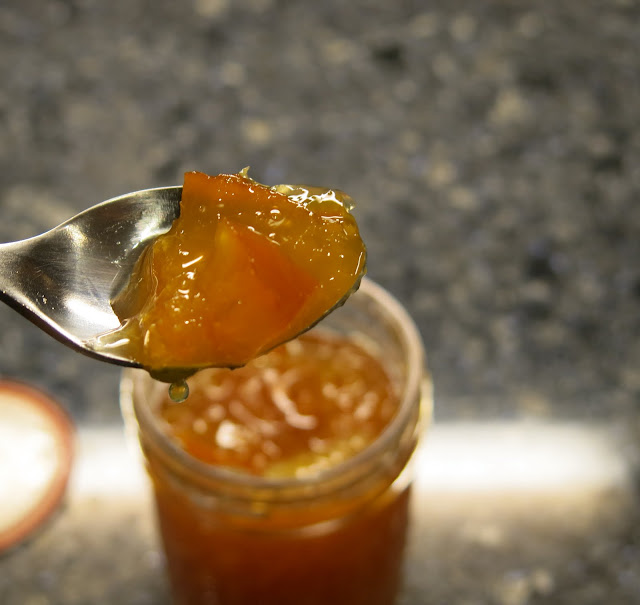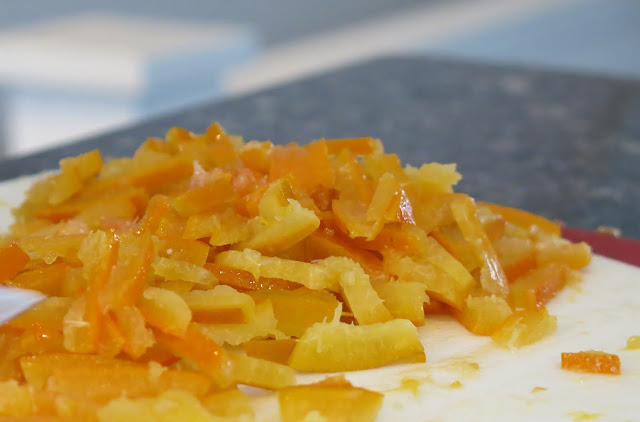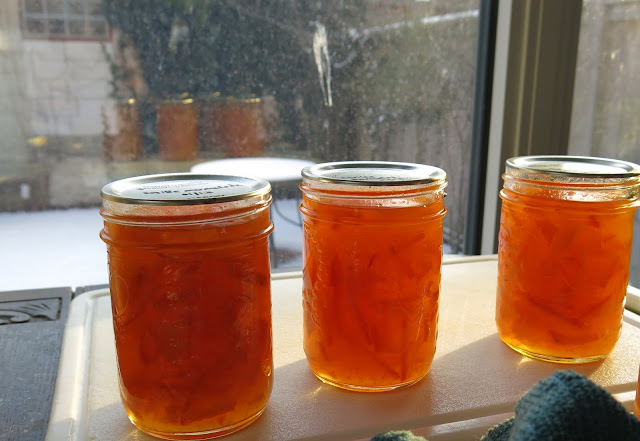 A long while ago, canning buddy and I made a slightly caramelized marmalade with some brown sugar for colour, and whisky thrown in at the last second, supposedly for taste. But we never tried it again, for reasons I can no longer remember.
A long while ago, canning buddy and I made a slightly caramelized marmalade with some brown sugar for colour, and whisky thrown in at the last second, supposedly for taste. But we never tried it again, for reasons I can no longer remember.
Cue this week’s experiment, an after-work celebration of the fact that the Seville oranges have finally, finally, finally made it to Toronto. Two batches, one with mostly brown sugar, one only with white, and both are pretty damn awesome. I know this because a jar of each marmalade failed to seal properly after their moment in the water bath, forcing me to open and taste both jars before storing the leftovers in the fridge. These are almost the first no-seal jars. Did I take them out of the water bath too early? Fill them too full? Not finger tighten the rings hard enough before the water bath? Who knows. It just means more marmalade to eat right now.

I’m not going to go through the recipe in detail here, because it’s basically the same as the five (!) batches of marmalade I’ve already made this month (Meyer lemon, Cara-Meyer, a mini grown-in-Ontario batch of what was probably calamondin, a mixed orange-lemon marmalade in Florida and a delicate Meyer-blood orange mix that I didn’t blog about).
The method uses equal weights of fruit, sugar and water, with a pre-boil, a slicing of the peels and then a rolling boil until it sets. It’s a method from Marisa at Food in Jars and it usually works. One of the latest batch was regular Seville orange marmalade — with a kilo of white sugar and the same weight in Seville oranges (and one lemon). For the second I used the same amount of fruit, but 650g of brown sugar and 350 of white. It very, very dark — almost a chocolate rather than an orange with a taste that’s almost burnt.
And this time, the set was just about perfect, as opposed to the slightly too runny Cara-Meyer marmalade and the rather well set Meyer lemon mix that started this year’s marmalade season.
Next up: a Daily Telegraph recipe for marmalade with the addition of black treacle (Britain’s bittersweet and gooey answer to North American molasses), and a blog on using up marmalade. There’s a lot to use.

 The only issue. A nibble of raw peel shows that all the bitterness migrated from fruit to rind on this baby, and that one nibble left my whole mouth atingle, in a most unpleasant way. I peeled the fruit, pared off much of the pith and boiled the peels up three times in fresh water to try to dull the bitterness (in a way that worked moderately well for the
The only issue. A nibble of raw peel shows that all the bitterness migrated from fruit to rind on this baby, and that one nibble left my whole mouth atingle, in a most unpleasant way. I peeled the fruit, pared off much of the pith and boiled the peels up three times in fresh water to try to dull the bitterness (in a way that worked moderately well for the 

















